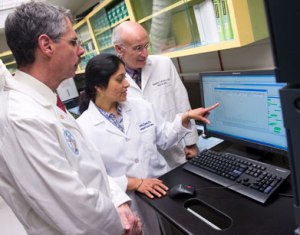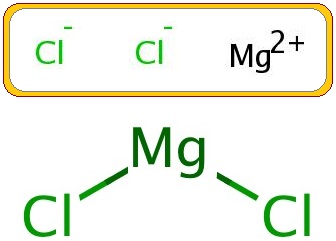source: site web du GdR Robotique
Mechatronics for Medical Robotics
How to succeed in medical mechatronic development
Le GT1 a le plaisir de vous proposer un tutorial sur la conception mécatronique pour la robotique médicale, organisé avec le soutien des Labex ACTION et CAMI lundi 7 juillet dans le cadre de la conférence IEEE/ASME AIM 2014, organisée à Besançon. Les orateurs rassemblent des intervenants de laboratoires français impliqués dans la conception et la commande de systèmes robotiques pour la médecine et la chirurgie.

The development of robotic assistance for surgery and medicine has become a mature field of research, and today an increasing number of successful products is emerging on the market. Contrary to industrial robotics, medical and surgical robotics require custom hardware and software solutions for each device. Mechatronic design can indeed be hindered by the existence of close interactions with the physician or the surgeon, the safety concerns, the operating room constraints and the interactions with an in vivo environment.
In this tutorial, we aim at giving the audience some key elements to succeed in the development of a medical robotic assistance, and help to build a successful mechatronic approach. To do so, researchers with recognized expertise in design and control for the medical context will be gathered in this full day tutorial. Interactions during the tutorial will be encouraged. Specifically, the end of the day will be devoted to a poster session where the participants will have the opportunity to present ongoing projects, open issues related to a medical/surgical application, so that deeper discussions with the speakers and between the participants can be engaged. We anticipate the tutorial to be engaging to mechatronic designers involved in the development of the design and control of robotic devices. In particular, two categories of attendees will find the proposed tutorial useful:
- Students, who are interested in learning about the state of the art in mechatronics for medical and surgical applications,
- Industry technologists, that are involved or would like to develop projects in the field.
As a secondary audience, the tutorial will be of value for established researchers who wish to relate their work to this area. When: July 7th, 2014. Where: in Besançon, at the IEEE/ASME AIM 2014 conference.
Pierre Renaud (pierre.renaud AT insa-strasbourg.fr)
Nicolas Andreff (nicolas.andreff AT femto-st.fr)



 Magnesium chloride,
Magnesium chloride,  No, we’re not supposed to schedule an appointment with The Lord (each of us with their own one, of course..!), but it’s good to know that our body likes to point out deficiency in magnesium by means of the following main alarm symptoms: chronic fatigue and lack of energy, insomnia, confused and uncontrolled emotional reactions, rapid pulse and muscle spasms, nervousness and irritability, and so on. For sure it’s not a big deal, it’s something that, more or less, we experience from now to then… what has been scientifically proven is that reestablishing the correct magnesium body requirement has very positive healing effects on anxiety, muscular pains, asthenia (when, in the morning, you wake up and you already feel dead tired), blood and body infections, nervous and emotional well-being, digestion and a lot more things that colour our daily life 🙂
No, we’re not supposed to schedule an appointment with The Lord (each of us with their own one, of course..!), but it’s good to know that our body likes to point out deficiency in magnesium by means of the following main alarm symptoms: chronic fatigue and lack of energy, insomnia, confused and uncontrolled emotional reactions, rapid pulse and muscle spasms, nervousness and irritability, and so on. For sure it’s not a big deal, it’s something that, more or less, we experience from now to then… what has been scientifically proven is that reestablishing the correct magnesium body requirement has very positive healing effects on anxiety, muscular pains, asthenia (when, in the morning, you wake up and you already feel dead tired), blood and body infections, nervous and emotional well-being, digestion and a lot more things that colour our daily life 🙂 If you’re curious (I was), just go to the closest chemist’s/pharmacy/grocery store and ask for magnesium chloride. They’ll sell you a cheap 20 g sachet to be dissolved in 1 litre of water. It tastes pretty bad actually, very bitter (if cooled down in the fridge, it will be less unpleasant), but it’s totally tolerable since you’ll have 20 days to empty this magic bottle (and not half a day, as I thought. Do not try that, DO NOT!)
If you’re curious (I was), just go to the closest chemist’s/pharmacy/grocery store and ask for magnesium chloride. They’ll sell you a cheap 20 g sachet to be dissolved in 1 litre of water. It tastes pretty bad actually, very bitter (if cooled down in the fridge, it will be less unpleasant), but it’s totally tolerable since you’ll have 20 days to empty this magic bottle (and not half a day, as I thought. Do not try that, DO NOT!) The paper I submitted to
The paper I submitted to  L’utilisation de l’imagerie médicale pour guider les gestes en chirurgie et en médecine est aujourd’hui complètement généralisée. Quelle que soit la modalité d’imagerie, l’objectif est de réaliser des gestes très peu invasifs, de précision, limitant par ailleurs le trauma post-opératoire. On peut retrouver ces problématiques notamment en chirurgie guidée par imagerie endoscopique, ou en radiologie interventionnelle. Des pratiques associant chirurgie endoscopique et interventions percutanées sont par ailleurs en train d’émerger, sous la dénomination de chirurgie hybride. La robotique a de longue date fourni des solutions pour réaliser le guidage des instruments et assister ces procédures. Ce thème peut même être considéré comme central dans les préoccupations de la robotique médicale.
L’utilisation de l’imagerie médicale pour guider les gestes en chirurgie et en médecine est aujourd’hui complètement généralisée. Quelle que soit la modalité d’imagerie, l’objectif est de réaliser des gestes très peu invasifs, de précision, limitant par ailleurs le trauma post-opératoire. On peut retrouver ces problématiques notamment en chirurgie guidée par imagerie endoscopique, ou en radiologie interventionnelle. Des pratiques associant chirurgie endoscopique et interventions percutanées sont par ailleurs en train d’émerger, sous la dénomination de chirurgie hybride. La robotique a de longue date fourni des solutions pour réaliser le guidage des instruments et assister ces procédures. Ce thème peut même être considéré comme central dans les préoccupations de la robotique médicale.